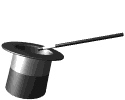|
Irvine Valley College Marjorie C. Luesebrink, M.F.A., Professor // Literature 47 -- Fable and FolktaleResearch Paper Help Page 5 Writing
Workshop - Models for Structuring
the Paper Writing Workshop Students are, of course, free to structure their papers in any way that is logical and appropriate for presenting their material. Still, I find that many students consider the "writing" part, especially the organization of their papers, to be more difficult than the research itself. In order to make this part of the process easier, I would like to suggest a helpful model for you. If you use this model, you can begin writing the paper almost as soon as you begin your research, and you will be able to see at a glance what kind of information you need to complete your project. First, therefore, I want to give you an overview of what the Structure of your completed project might look like: you can use this as a model: YOUR TITLE
Essentially, then, your paper will have the three structural elements you are already familiar with from composition classes, an Introduction, a Body, and a Conclusion. The beauty of this model is that it can suggest to you exactly what kind of material goes where! Since your readership is a "research" audience, you can assume that they know much of the general information about Folklore that we have learned in this class. This saves you the trouble of explaining much of the background information that you needed to get as part of your own research. Instead, you can "Hook" your reader in the Introduction with the focus tale you have chosen. You can summarize the tale if it is very long, but the best solution would be to "select and copy and paste" the actual tale and use it as the opening for your paper. Next, you should explain a little bit about the history, occurrence, tale type, and motifs of the tale. When the reader is oriented to the particular tale/theme, you can go on to the Thesis Statement. The Thesis Statement should be coming into shape for you - but in any case, you can put it in place and then fine-tune it when you have the rest of the paper in place. Remember, it should be ONE sentence, and it should be limited so that you can cover the implications of it in a short research paper! The Method Statement is really your road map for the paper. If you can identify three or four main topic ideas that you will cover in the paper, you should have a workable amount! The Method Statement should have parallel structure (see below); if you can't get the Method Statement into a parallel structure sentence, your topics may not belong together. In the Body of the paper, you should have only the three or four major units that you have outlined in the Method Statement. Each item in the Method Statement should head a main paragraph with the corresponding Topic Sentence. These should come in the order that they were mentioned in the Method Statement, and each section should have good supportive concrete detail from the texts you are using. The Conclusion is for wrapping and packaging the material you have already covered. The Signal re-states the Topics from the Method Statement. The Link announces the significance of the Thesis, now that it has been explained. The Clincher leaves the reader with a concrete, sensory memory of the Folklore issues you have treated. In keeping with the examples that we have been working with, the paper on the Dullahan might be sketched out in a schematic something like this:
You are certainly not limited to a Method Statement that lists three or four stories - that is just one way of organizing your paper. In the case of the Dullahan, you might want to have a Method organization that looks more like this: A. The Irish Dullahan B. Washington Irving's Headless Horseman C. Hessian Mercenary Horsemen Our other example, the Tortoise and the Hare might have a Thesis Statement and Method Statement like this:
There are as many ways of organizing the body of a paper as there are fascinating themes and motifs in folklore - the key thing is that you DO have a method of structuring your writing. This project is really not so extensive that you will want to risk getting lost and trying to cover way too much. I will be happy to discuss all Topics, Thesis Statement, and Method Statement question with you either by private e-mail or, better, on the Discussion List. When students share the development of their research projects with their colleagues, everyone benefits. We all get to learn about new folklore material, and the examples of structure and organization can assist many other students!
Go on to Standard
Online Assistance in Formatting a Research Paper (including Works Cited
and Bibliography)
| |||||||||||||||||||||||||||||
|
Table of Contents for Research Help Section Marjorie C. Luesebrink, MFA Fable and Folktale Literature 47 Contents: About Your Class / Class Syllabus / Lecture Notes / Reading List / Recommended Reading / Assignments / Resources and Web Sites / Grading Policies / Contact Your Instructor |

